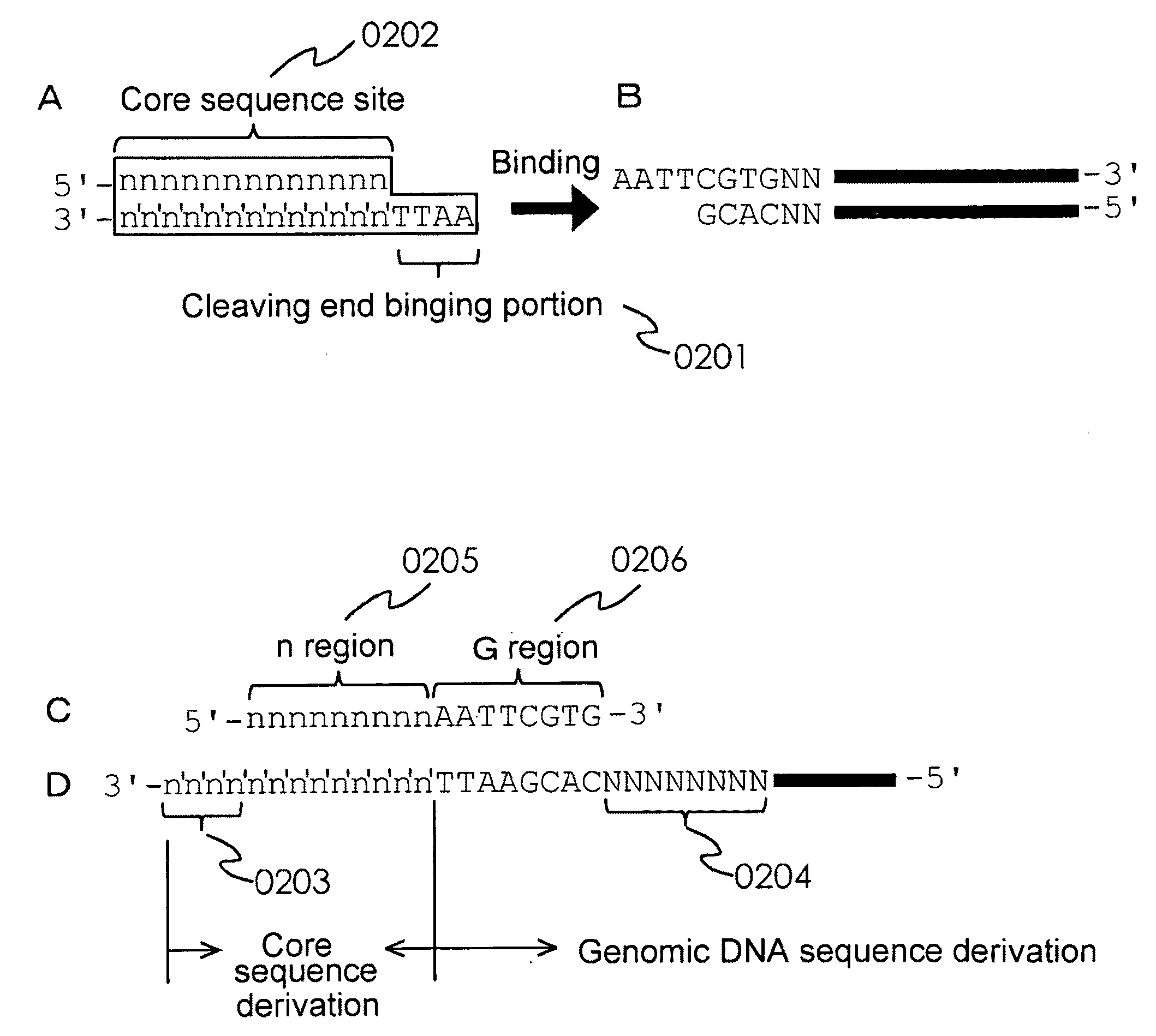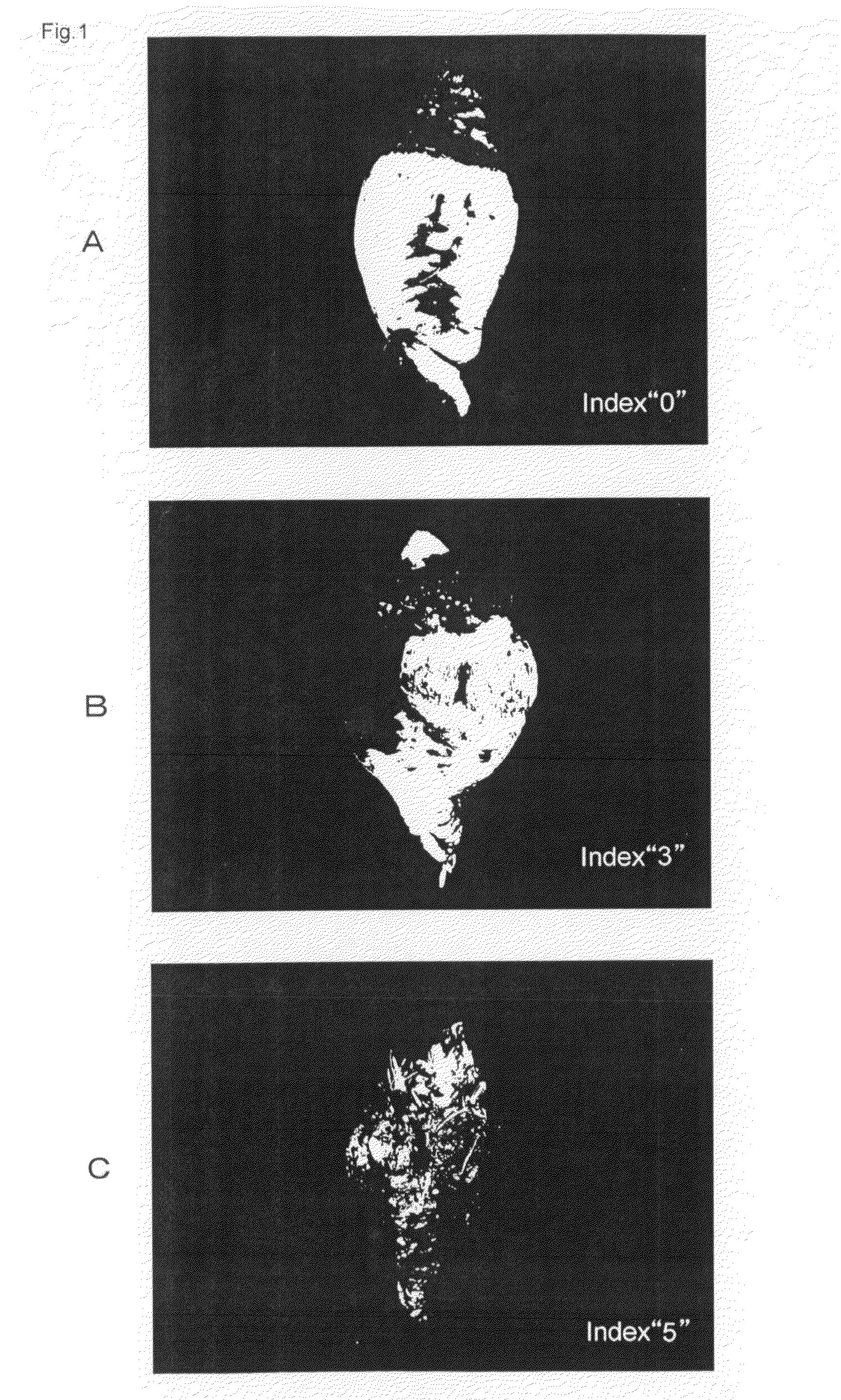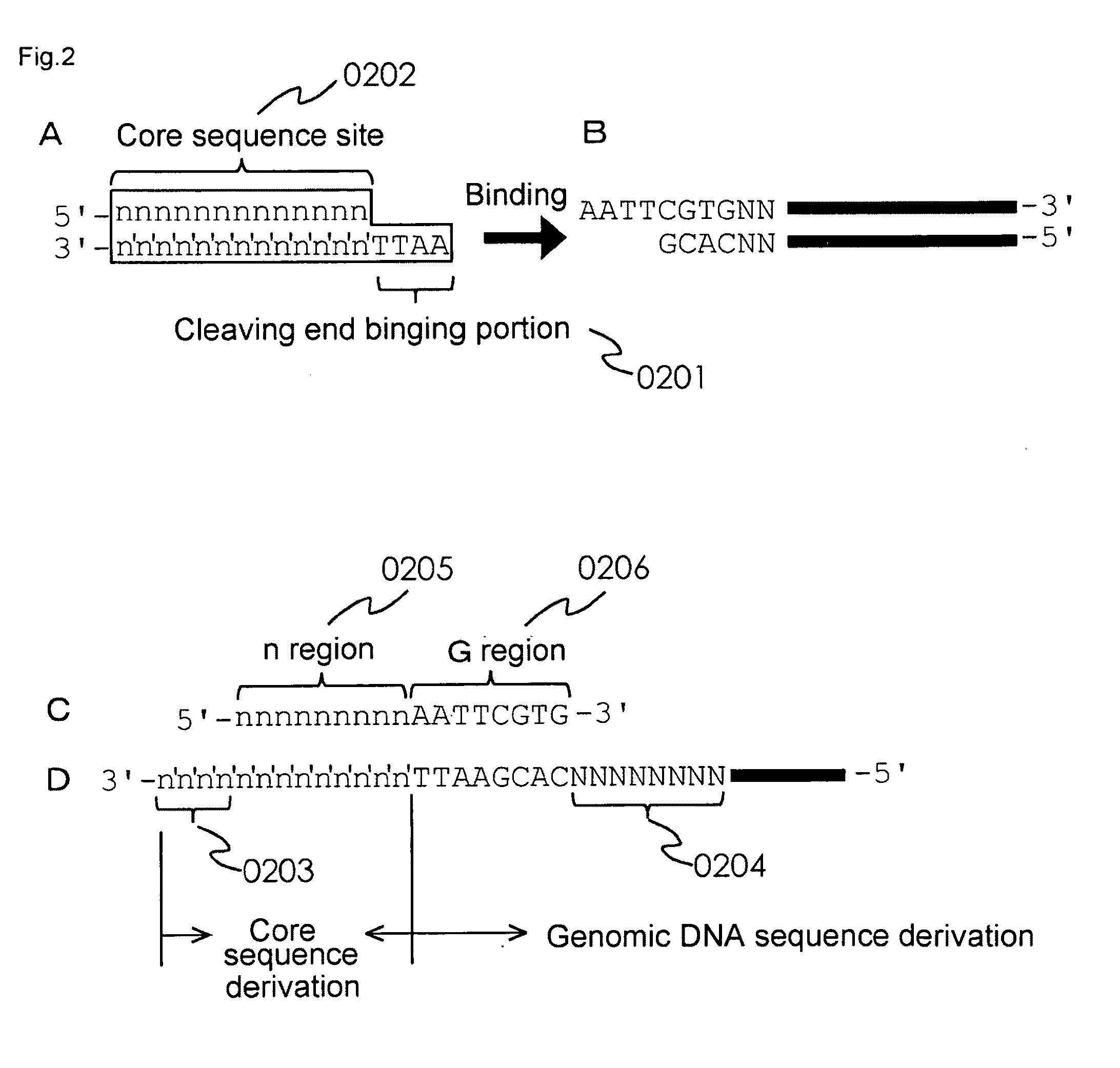Marker for Selecting an Aphanomyces Cochlioides-Resistant Variety and Selection Method Therefor
a technology of aphanomyces cochlioides and a selection method, which is applied in the identification of library members, organic chemistry, biochemistry apparatus and processes, etc., can solve the problems of reduced crop yield, disease damage to mixtures including rotten roots in the sugar manufacturing process, and difficult to prevent and eliminate such damage, etc., to achieve stable amounts of sugar yield, high accuracy, and enormous effort or time. cost
- Summary
- Abstract
- Description
- Claims
- Application Information
AI Technical Summary
Benefits of technology
Problems solved by technology
Method used
Image
Examples
first embodiment
Effect
[0083]In accordance with the primer for selecting the Aphanomyce cochlioides-resistant plant variety and the method for selecting an Aphanomyce cochlioides-resistant plant variety using such primer of the present embodiment, even during the seedling plant period prior to symptom development, it is possible indirectly select a plant variety that shows dominant resistance against Aphanomyce cochlioides in a highly accurate manner without depending on phenotype solely by collecting parts of the plants.
[0084]Moreover, the method for selecting an Aphanomyce cochlioides-resistant plant variety of the present invention can be used for selecting the Aphanomyce cochlioides-resistant progenies acquired through the selected Aphanomyce cochlioides-resistant plant variety. Thereby, it is possible to efficiently improve the breeding of Beta vulgaris L. with Aphanomyce cochlioides resistance without enormous effort, time, or costs. Due to this, it is possible that the sugar yields will not b...
second embodiment
Effect
[0092]The methodology for identification of an Aphanomyce cochlioides-resistant gene of the present embodiment allows restriction of the regions that encode the Aphanomyce cochlioides-resistant gene on the genome, and identification of such genes. Additionally, making a comparison of the base sequences between the Aphanomyce cochlioides-resistant plant variety and the Aphanomyce cochlioides-susceptible plant variety, Acr1r—that is to say, the Aphanomyce cochlioides-resistant allele of the Aphanomyce cochlioides-resistant gene—can be identified. In case that such gene can be identified, in regards to selection of the Aphanomyce cochlioides-resistant plant variety, it is possible to directly detect the same. Moreover, a gene recombinant in which the Aphanomyce cochlioides-resistant genetic allele is applied to the Aphanomyce cochlioides-susceptible plant variety is created. Due to this, it is possible to easily obtain an Aphanomyce cochlioides-susceptible plant variety.
first example
[0093]The first embodiment is specifically explained hereinafter. The present embodiment simply exemplifies the present invention, and the present invention is not limited by such embodiment.
[0094]Aphanomyce Cochlioides-Resistant Plant Variety>
[0095]Herein, in regards to 4 strains (a1-a4) of the plant variety that is revealed to have resistance against Aphanomyce cochlioides and 4 strains (b1-b4) of the plant variety that is revealed to have sensitivity in regards to Aphanomyce cochlioides based on phenotype, specific examples in which the method for selecting an Aphanomyce cochlioides-resistant plant variety of the first embodiment using plant issues (green leaves) acquired through each strain was implemented are described.
[0096]((Method))
[0097](A) DNA Extraction Process
[0098]Herein, a method that involves use of the CTAB method is explained with reference to relevant examples.
[0099](Reagent Composition)[0100]2×CTAB: CTAB (ICN Biomedicals. Inc., and the same shall be applied herein...
PUM
| Property | Measurement | Unit |
|---|---|---|
| Tm | aaaaa | aaaaa |
| reaction temperature | aaaaa | aaaaa |
| temperature | aaaaa | aaaaa |
Abstract
Description
Claims
Application Information
 Login to View More
Login to View More - R&D
- Intellectual Property
- Life Sciences
- Materials
- Tech Scout
- Unparalleled Data Quality
- Higher Quality Content
- 60% Fewer Hallucinations
Browse by: Latest US Patents, China's latest patents, Technical Efficacy Thesaurus, Application Domain, Technology Topic, Popular Technical Reports.
© 2025 PatSnap. All rights reserved.Legal|Privacy policy|Modern Slavery Act Transparency Statement|Sitemap|About US| Contact US: help@patsnap.com



